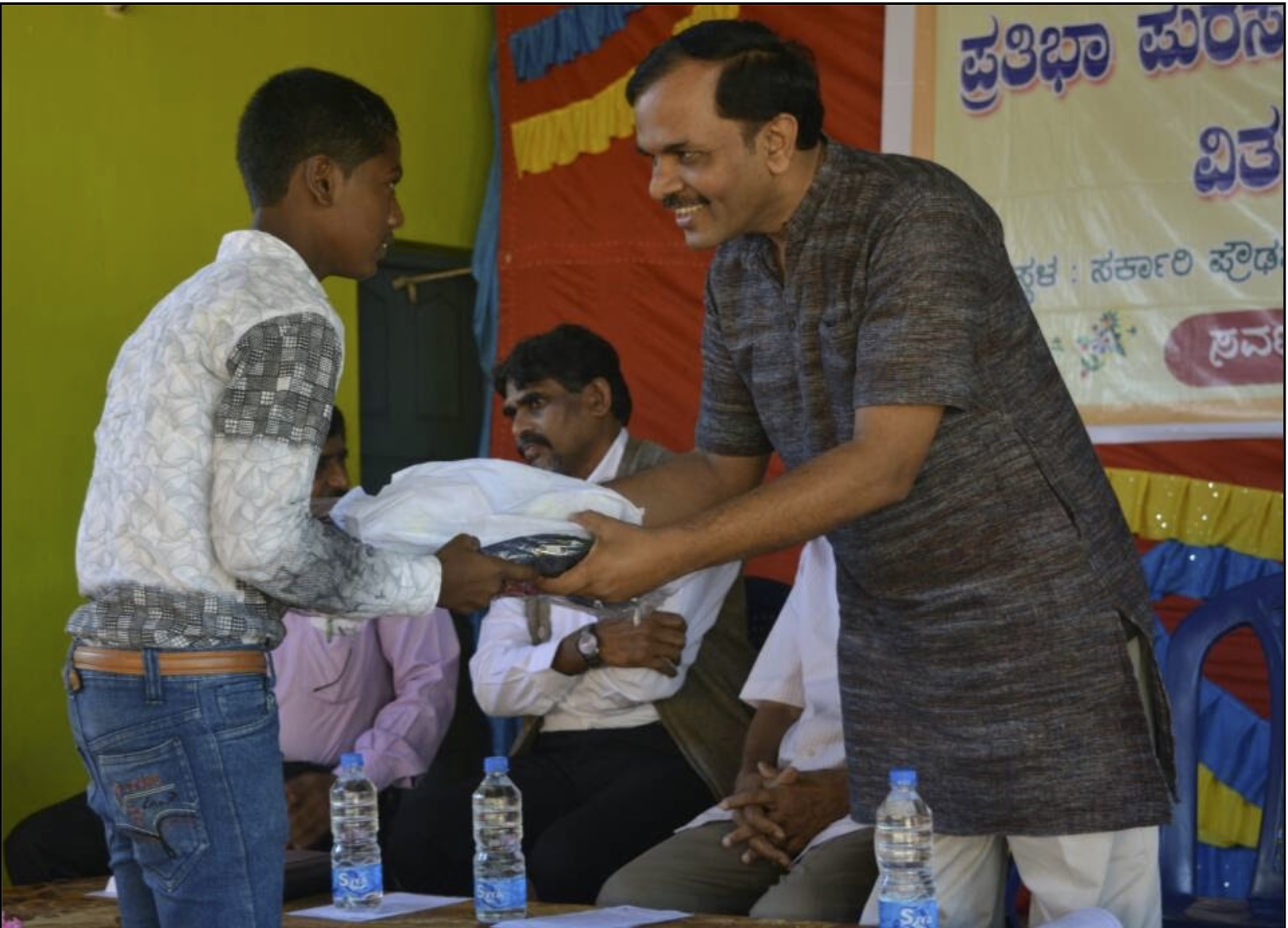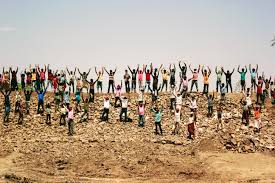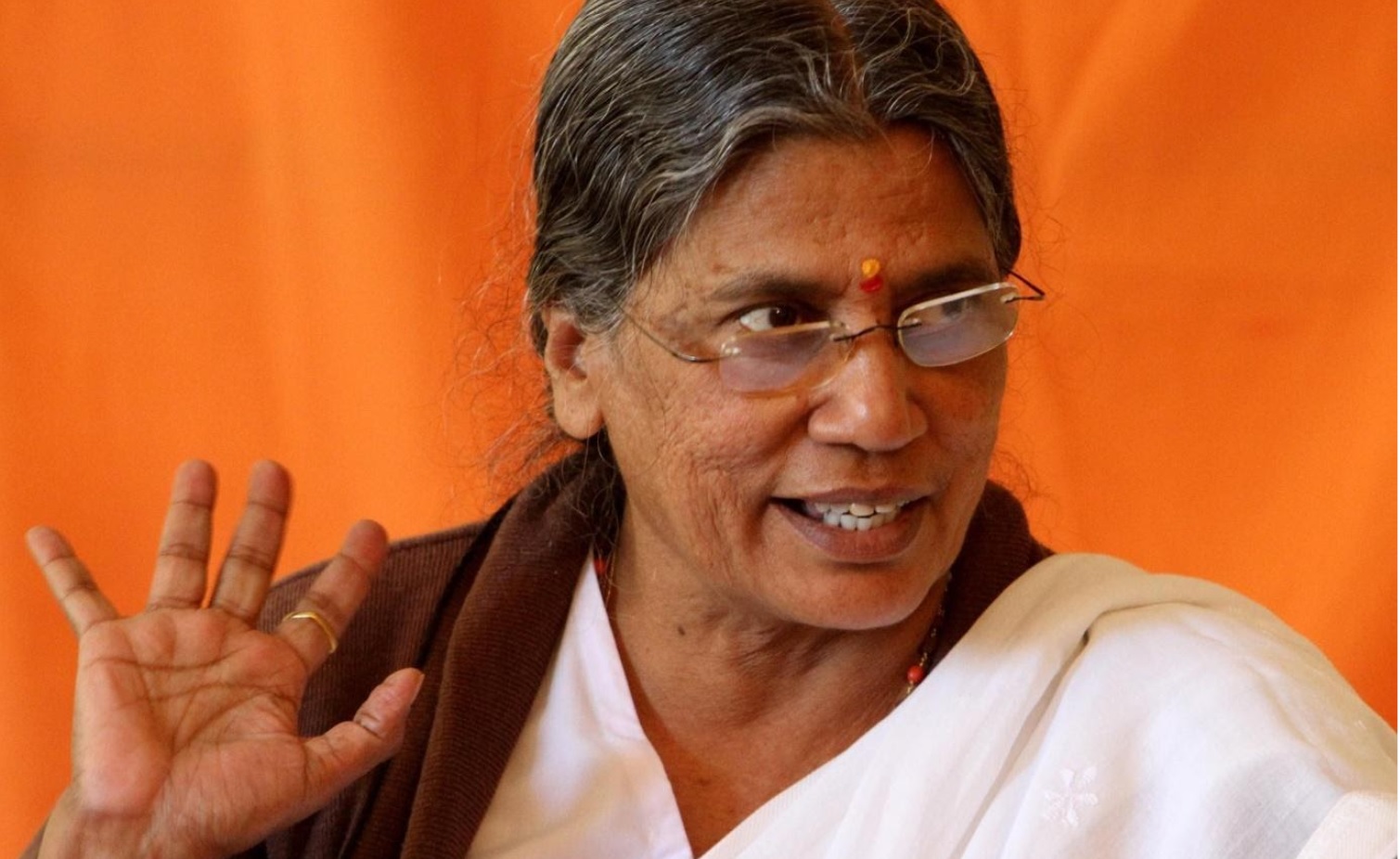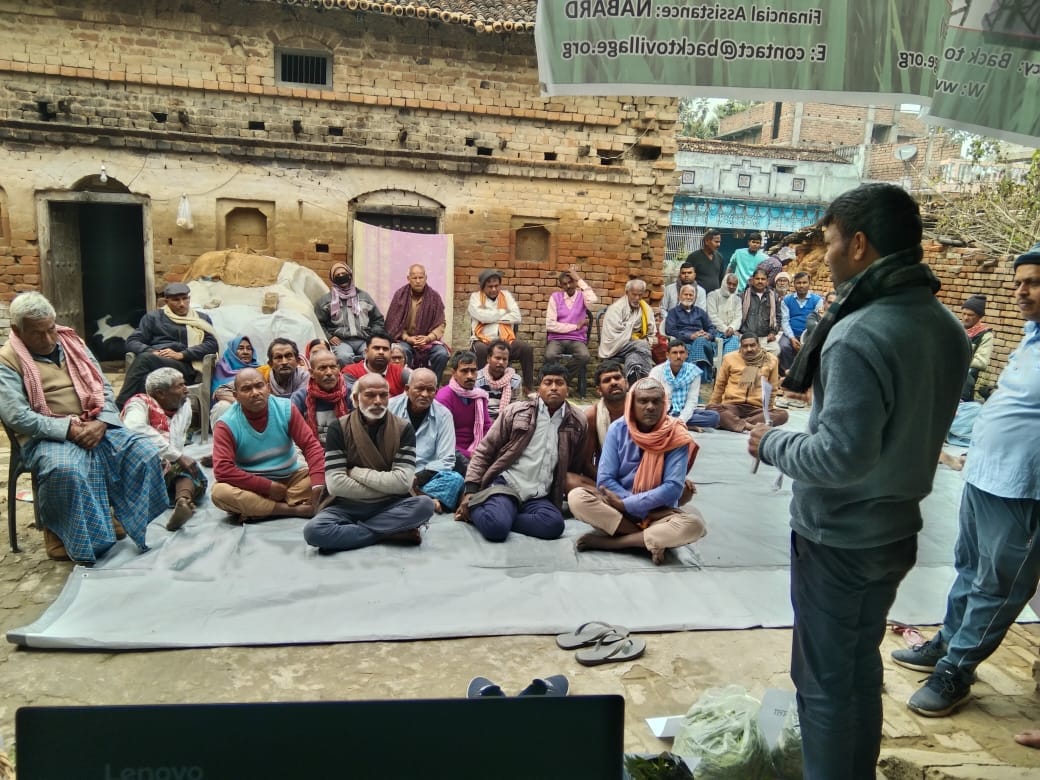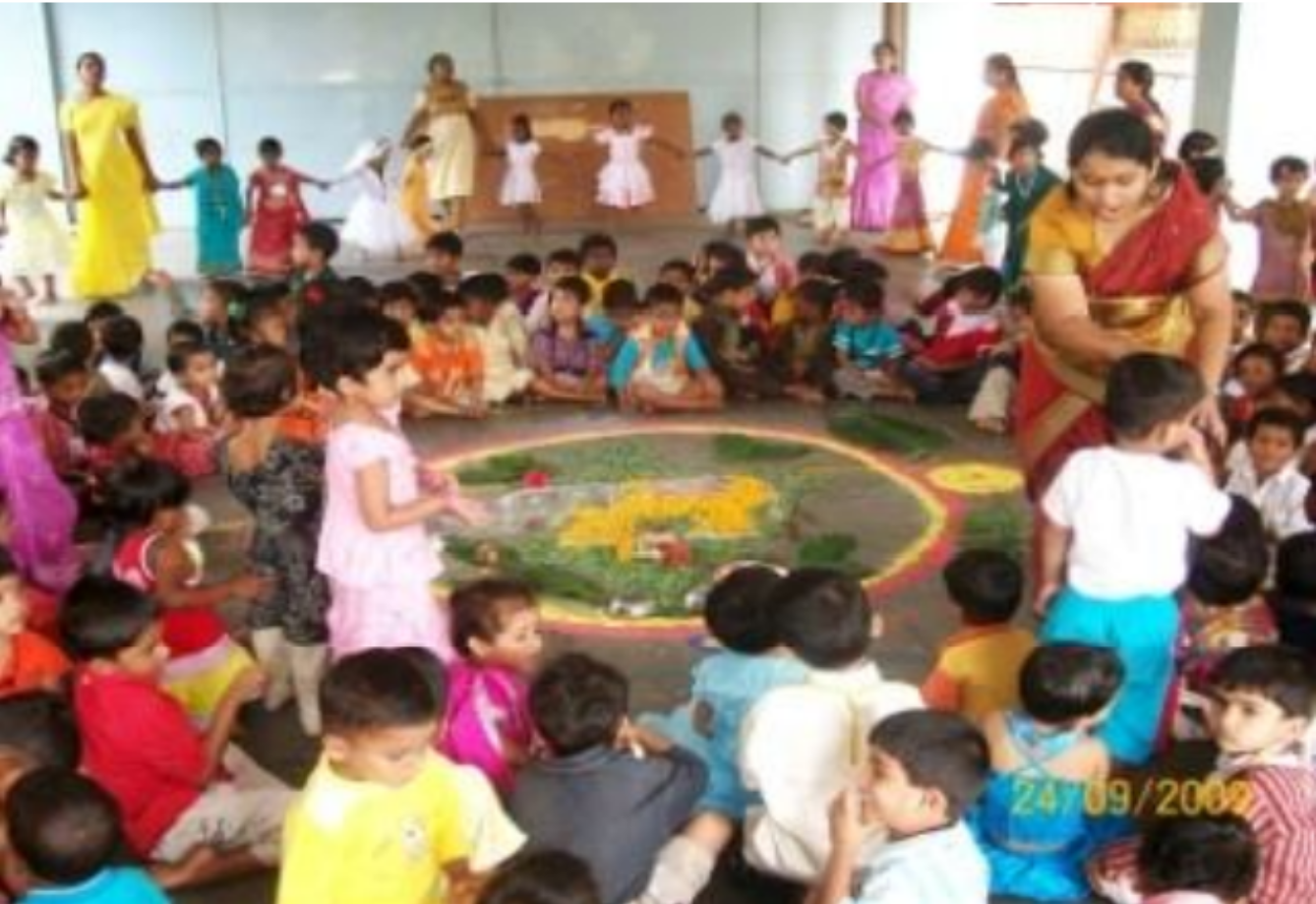Meet Neha [name changed], a young schoolgirl who starts every morning working as a maid in two different households. Only after that is she able to attend school. For Neha’s family, school is not the first priority because they need the extra 1,000 rupees to support themselves every month. One day, Neha heard about a tutoring program at her school run by volunteers from an organization called Youth For Seva (YFS). Neha worked for weeks, revising her homework and studying for her exams with the help of the volunteers of this organization. That spring, Neha was able to pass her exams and earn a government scholarship of 12,000 rupees per year. Now, her family can afford to let her focus on her studies and attain greater social mobility rather than work as a laborer as she did earlier.
Youth For Seva (YFS) is an organization that has created a lasting impact on thousands of such families through an array of programs designed to empower and serve various communities across India. In addition to tutoring, Youth For Seva has several programs to help educate school children on topics often considered taboo, such as menstrual hygiene and mental health. Children who are involved in substance abuse or in need of emotional support who don’t receive it from their families are able to seek help from various counselors who are committed to assisting them. And these are only a couple of examples of what Youth For Seva does. However, what the YFS does is far more fundamental and unique – it enables volunteering, it motivates, engages, orients and trains volunteers to help them render service in the way that is possible and most appealing to them. Since it was formed YFS has trained and engaged thousands of volunteers, many of who after working on projects of YFS have incubated and gone on to start social service projects and organizations of their own. As part of the Dharma Internship Program 2020, we researched the organization and interviewed its founded Venkatesh Murthy who is based in Bengaluru, India to understand the organization’s work.
How the idea started
Venkatesh Murthy, the founder of YFS, came to the United States in 1992 as a software engineer from India. During his time in the US, he was actively involved with the Hindu Swayamsevak Sangh (HSS), an organization that strives to preserve Hindu culture and values as well as unite the Hindu community outside of India. One of his prominent roles with this organization was ‘bala pramukh’ or coordinator of children’s activities. He tells us that this role enabled him to work closely with teenagers and youth. After spending a significant amount of time in both countries, Murthy realized that there was a need for youth volunteer opportunities in India the same way they are provided in the US. I had a gut feeling that a large number of youth are interested in volunteering in India. But there is no infrastructure. There is no mechanism to engage them meaningfully because the public schools or public hospitals don’t have any system in place to engage volunteers,” he explained.
The plunge to start the organization came after he read the book, The 8th Habit by Stephen Covey. The first chapter of the book describes finding one’s passion. To Murthy, that meant the idea of working with the youth in India to create more volunteering opportunities for them, to kindle the spirit of service within them and to enable them to serve the community. He moved back to India with this idea and created the basic framework of Youth For Seva in 2007.
Murthy was hoping to continue his job as a software engineer for a few more years along with managing YFS, but he quickly realized how much attention the organization needed from him. As time went on, Youth For Seva acquired more and more people who were dedicated to serving full time, and Murthy also decided to quit his own job in order to guide them in addition to expanding and growing the organization. Currently, he is the Executive Director and oversees the planning of the projects carried out by volunteers.
The philosophy of YFS
YFS is built on the philosophy of “rna”, a word in Sanskrit that means “debt”. Murthy told us “Everyone has borrowed something from society, whether it is from our parents, friends, or even the environment.” The YFS logo is a representation of “yagna”, which is the act of giving back what is borrowed without expecting anything in return. This is what, he told us, differentiates sewa (a Sanskrit word meaning selfless service) from volunteering. “Sewa is done purely out of good will with the intention of providing service to people while working towards becoming a better person, while volunteering could often be done to get a sense of “instant gratification” and sometimes even external incentives.”
Additionally, Murthy talked about the differences between youth in America and India. He specifically described how American youth often do volunteer work for a reward such as getting volunteer hours or other incentives like polishing their college resumes while most kids in India volunteer to with a sense of indebtedness towards their teachers, elders, families, and surroundings. To Murthy, this illustrates how kids in India are more likely to be passionate about and dedicated to their work which in turn helps the people who they aid. He pointed out how many youth and adults in America help out the elderly at old age homes, yet aren’t willing to take care of their own parents.
Facilitating volunteering
The YFS mission as per its website is to “facilitate a movement of volunteering, empower and enable individuals to become positive change agents in the society, enable institutions to effectively engage the community to deliver services, and promote sustainable lifestyles.”
Some examples of projects are School Kit Drives and Doctors for Seva. In the School Kit Drive project, YFS funded and designed a program which would provide kids with proper school supplies such as notebooks, pencils, water bottles, etc. These kits were handed out by volunteers to kids in slums and rural areas in order to better prepare them for the beginning of the school year. Doctors for Seva is a part of YFS where doctors, nurses, and other medical health professionals spend time on a volunteer basis working with non-medical volunteers to provide proper care for people in underdeveloped areas. Hundreds of medical professionals have provided thousands of health screenings in schools and set up nearly two thousand health camps in old age homes and slums. Volunteers have also immensely helped raise health awareness in terms of menstrual hygiene, nutrition, general medicine and first aid.
Through its purpose, Youth For Seva differs from many organizations immensely. In fact it is the first organization of its kind in India. It aims at specifically engaging the youth and young adults to help underprivileged communities on a systematic basis. The emphasis is more towards creating the spirit of volunteerism and orienting people towards service. YFS also has many projects. Some examples include helping people with obtaining skills to work to be able to provide for their family, or tutoring students who don’t have easy access to education. This is more effective than providing temporary relief because it allows people to become self-sufficient and support themselves.
Venkatesh Murthy says that the values learned and imbibed from volunteering at Youth For Seva are immense. His motto is “Youth For Seva is seva for youth”. What he means is that though the volunteers provide much needed care and help to those who are less fortunate, they themselves often find it to be an enlightening experience. They feel gratification and reflect on themselves to become better people. Their time as volunteers rewards them with immense knowledge and many life lessons through working with a variety of people, as attested to by Murthy and other long-time volunteers.
How serving others transforms the volunteers
One such volunteer was Aavi [name changed], a young woman who volunteered with Youth For Seva as a mentor to students in government schools. She was also a chainsmoker. She realized during her time with YFS that the children she taught looked up to her as a role model and inspiration, and doing addictive and harmful activities like smoking could pass on to them. This motivated her to stop smoking in order to become a better role model. This story is an example of how seva is truly reciprocal as both the volunteers and their beneficiaries are impacted positively.
Murthy also talks about how volunteering helps the wellbeing of younger generations who are affected more and more by stress and mental health issues. It gives them a sense of value and importance and takes their mind off of negative thought patterns and life stressors. The philosophy of Youth For Seva is to give back to the communities that have supported all of us in tangible and intangible ways by volunteering.
Venkatesh Murthy talked about how he had focused primarily on young adults because they have passion for this kind of service and have more time, energy and resources to do it. Youth today are able to give back more and have greater financial stability than previous generations, he explained.
At first, Murthy had to recruit volunteers constantly for the projects. He would talk at colleges about the benefits of volunteering and how it will help the mental health of their students and should be a requirement as it helps show dedication and passion from students attending the colleges. He would also spend time communicating with the HR departments of companies on how volunteering would help bond teams and be a good skill-building activity for them.
Once he had acquired volunteers, he had some difficulties at first with some of the volunteers’ cooperation- some would not commit enough time and others lacked passion or motivation, which caused them to lag behind and not help others or their projects enough. Others would not stay long enough or would not continuously volunteer which made it troublesome to keep a steady stream of projects on going. At the beginning, Murthy himself would have to directly facilitate such projects, but now volunteers do on-the-ground work, and he coordinates their efforts overall. He described some challenges with organizing programs, mostly with the volunteers themselves. Though many volunteers are very responsible, some may forget to do their project work or inconveniently reschedule shifts, causing shortages. His experience taught him that putting multiple volunteers per project ensures that if there is a scheduling conflict, the communities will still receive regular assistance.
But, soon enough many committed and as the organization grew, so did their head count as now they have no trouble getting enough volunteers with over 300 applicants a month. This allows for bottom-up brainstorming practices. Ideas often come straight from the volunteers on the ground as they identify problems in their locality. Then, solutions and their methods are brainstormed and those ideas turn into projects.
A vision for the future
As the organization is still rapidly growing, they hope to expand their programs to reach Kashmir valley where the violence has led young people into terrorism and the northeastern states where many developmental challenges are seen. The organization also wants to expand to more rural parts of India and reach out further and further away from cities. This would help many villagers get better skills and techniques and help them attain better medical care and education that their location prevents access to.
In India, there are many small local aid organizations with no dominant monopolies or chains. This is an advantage for Indian society because it allows non-governmental organizations (NGOs) to aim at solving very specific problems unique to certain regions. After all, not all of the problems faced by Indians in need are the same, so Youth For Seva changemakers are necessary in every area, urban and rural. Unfortunately, many of these organizations work in the same spaces as large international organizations and missionary NGOs who often have specific agendas that may even be exploitative towards the people they seek to help. The smaller organizations lack some of the professionalism of larger ones, which is where YFS comes in. Together, they focus on helping organizations increase their capacity-building and communities through empowering mutual-aid structures.
Youth For Seva is connected to 240 different NGOs which they engage at three different levels. At the first level, they provide volunteers for various causes to help out on-site. At the second level, they invite NGOs for training programs and collaborative partnerships. NGOs that are in the third tier receive help from YFS with raising funds through corporate partnerships. The last level is quite exclusive and screening is meticulous because they receive the most help from Youth For Seva.
However, to engage with Youth For Seva as an NGO, there are a few qualifications one must fulfill. Youth For Seva was founded on a “nation-first” principle meaning the actions of each NGO should be in the best interests of India as a country and its integrity. For this reason, separatist movements in Northeast India are not receiving support from Youth For Seva. YFS defines itself as non-political and firmly believes that seva (service/helping others) should not be conflated with politics.
In our interview with him, Murthy fondly remembers the beginning of partnerships with some government states saying, “It was hard to believe that people can be honest when working with the government system because a lot of NGOs that need government grants bribe government officials to get them and there is a lot of corruption. But those things aren’t true of YFS’s engagement. We don’t take money, we only ask for permissions and send regular reports. Often it takes state governments a few years to believe the sincerity of YFS, but once they do, they really respect our organization.”
The second condition is described as “pluralism” or respect for diversity. This manifests as not participating in religious conversions or erasing local cultures and traditions. There are some missionary organizations who do not receive support from YFS for this reason. The final qualification is harmony, which, while partly encompassing the earlier two, focuses more on settling divisions between citizens or lending non-selective aid to the people. NGOs that selectively and discriminatorily aid some citizens over others also do not receive support.
At the conclusion of Youth For Seva’s projects, impact is measured on a case-by-case basis given the variation in programs. Additionally, every project has three factors: inputs, outputs, and outcomes. Input is the effort put in by volunteers and coordinators. Naturally, the impact is more significant when volunteers “input” more hours on a project. The output is a measurement of the actual program itself as it happens. Outcomes are defined as the long-term transformation of the affected community. For example, academic programs like literacy, tutoring, and menstrual education programs are often measured based on student attendance and literacy rates at the local school which may be measured bi-annually. Health and women empowerment projects, both of which are very successful programs, require baseline data recordings about the condition of the region before the project to measure obvious results. For environmental projects, data recording is clearer as the data is more quantifiable (like the number of trees planted or pollution density decreased), and understanding the overall success and impact of the project is easier.
If the concept and mission of Youth For Seva really resonates with you, there are many different ways you can get involved. Within India, there are both individual volunteer sign-ups and student volunteer registrations that you can apply to, as well as an internship program which may suit your needs better. YFS offers a large range of options so you can find times that work for you. Otherwise, you can always donate on their website and contribute that way. Another way to carry forward Venkatesh Murthy’s legacy is to apply the Youth For Seva message and vision to your own life and environment around you to make meaningful change in your community.
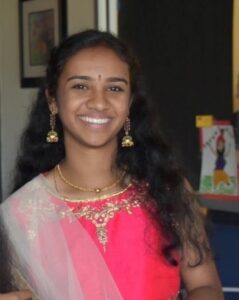
Meena Iyer
Meena is a senior at Branham High School, San Jose. She like playing tennis, crocheting, and spending time with friends.

Shivani Subramaniam


